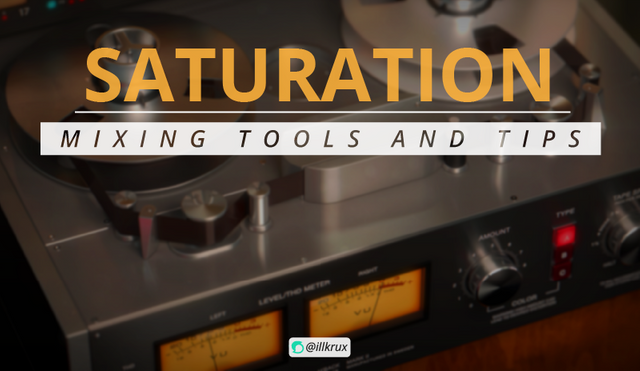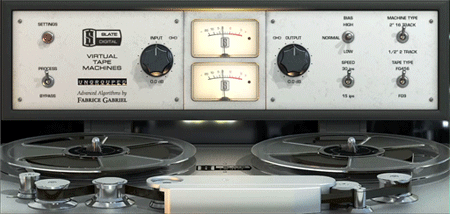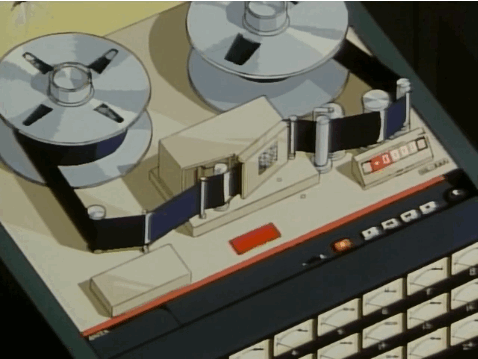Saturation | Mixing Tools And Tips

Bridging the Analog to the Digital realm has been a huge focus within the audio industry now days. One main reason is to get that "Analog Sound" engineers love when working with analog consoles and hardware back in the early days of audio engineering. The demand for this sound has increased overtime when engineers began to move towards working in digital (within DAW or Digital Audio Workstations) or "In-The-Box" as we call it, and slowly moving away from the huge consoles. Not obsolete but have gone less over time.
What is this "Analog Sound" that engineers seek? Where does it come from? Why is that a factor for them even until today where digital technology can provide them such precise and clean productions? Well, lets find out.
What Is Saturation?

That my friends, is the "Analog Sound" I mentioned before. Besides the pleasant artifacts that is produced when a signal is passed through physical analog circuitry, Saturation/Distortion/Harmonics is THE sound we all enjoyed and loved listening to back in the good ol' days of quality music. And that is THE sound, experienced and seasoned veteran engineers look for (also the reason why most of them still are sticking with analog consoles and hardware which I condone as well). What are you blabbering about you ask? Fair enough. My excitement got "heated" (pun intended).
Analog Saturation is actually flawed a process that shouldn't be done but done and found pleasant to be used as a tool by our veteran engineer back then. Technically speaking, it started with tape machines where sound is recorded into. These tape machines has magnetic tapes with a maximum amount of magnetism that it can hold. Saturation can be produced by increasing the amount of magnetism to the tape's oxide particles. When this recorded material is pushed in high levels or overloaded to the tape machine, the magnetic particles will fail to react in a linear manner because it has reached its maximum limit. This changes the sound of the signal that is being pushed into it. But the outcome of this changed sound fascinated the engineers. It turned out that the signal had more character, more color, and even energy like punch to the sound as result of distortion and compression from Saturating the signal. Familiar with the term "Analog Warmth" now?
In local terms. Saturation is created when the tape machine is pushed with high level of signal. This distorts and compresses the sound creating the Analog Saturation/Distortion to the signal.
If this was done today inside a DAW digitally, we would get something that is called "Clipping". Where the signal get totally destroyed when pushed above the 0dB mark and it's not pleasant at all. This is why you see engineers say they prefer working with analog hardware because they can push signals through them hard and hot and they won't clip the signal but instead, end up with "Analog Distortion/Saturation" or "Warmth" that enhances the signals in a unique way. This situation clearly stated that digital processor or plugin manufacturers and developers had to find a way to bring this Saturation "effect" to the digital world. Thus came the "Analog-Style Distortion/Saturation Effects" from the major plugin developers. Surprisingly, these hardware are emulated into plugins so accurately that the line between knowing which is the result of real analog hardware and which is the plugin is getting blurred more and more overtime. *Technology right?
- Still, never clip your signal above 0dB within the digital platform, meaning within your DAW.
- Some plugins that are designed to emulate the analog hardware are developed in a way where you can push the signal hard into them to make them saturate the sound just like how signals are pushed hard into the analog hardware initially. This is to emulate the real process of analog saturation. However, only the input of the plugin can be pushed. The output has to be set so that it's not clipping the signal within the DAW.
- Digital Clipping is NOT the same as analog saturation/distortion. Clipping as the name suggests, "Clips" the audio that goes above limit and introduces clipping noise that are not usable nor it is pleasant to listen to compared to the analog saturation/distortion.
Types of Saturation
There are many types of Saturations out there. We call them different "Algorithms". Transistor, Transformer, Tube and Tape. Each has its own special and unique character and tone but the ones that are most commonly used and found on plugin emulations are Tape and Tube. My favorite have always been Tape, Transformer and Tube Saturations. Each for the character that it introduces to the sound. We will take a look at Tape and Tube for now. I can talk about the others if you wish to know about them as well.
Tape Saturation.

If you ever wonder why a song from back then is sounding so pleasant to the ears. The high ends is shimmering clean but not harsh or poking your ears. The mid frequencies are so bold and upfront and the lows are big and tight. Yeah, that's Tape Saturation working at its finest when the song is recorded onto tapes. Tape Saturation tends to add low frequency harmonics and tames the high frequencies. Meaning, imagine a song with harsh ears-poking high frequencies, how would the waveform look like? Spikey right? What Tape Saturation does is it shaves or rounds off these spikey high frequencies and make them more pleasing to be heard. At the same time they add some additional harmonics to the mids and lows making the more focused, glued and stand out better in the mix. Now, we can find a lot of Tape Saturation Emulation plugins. From free ones to the expensive ones. We will get to them later.
Tube Saturation

In a hardware, Tube Saturation is achieved by running a signal through a literal tube that's located within the hardware. When the tube lights up and heated, it changes the sound of a signal that passes through it. As a result it add high frequency harmonics compared to the Tape Saturation which adds low frequency harmonics. For more than a year I thought Tube Saturation makes my signal "Warm" as in pleasing to the ears especially on the low end. My perception was "It's a tube that lights up. It gets hot. Obviously it makes my signal warm right?". Not really, it actually enhances the high frequencies. But that don't mean it makes the lows any uglier, some Tube Saturation can do some magic to the low too. It all depends on the hardware and the plugin emulation design.
When To Use?
Just like any other processing and effects in mixing, Saturation/Distortion can either enhance or totally obliterate your sound. Choosing the right Algorithm on the right material is the key. However, it's not that hard to know which works for what. Just experiment with them and use your ears. If it feels and sounds right for you, if it's producing the sound you have in your mind, than it's working the way you want it to.
Tape Saturation can be used on materials with high level of peaks and lacking low energy. For example, Drums (Kick, Snare, Hi Hats) and plucking instruments. If the signal is too spikey and pokey, you can use Tape Saturation to tame this peaks and get some extra grit to the low end. Transformer Saturation can also do wonders on the low end adding weight and punch making it tight and rounded which is why it's one of my favorite. It was the sound I was looking for on Tubes. Facepalm...
Tube Saturation can be used on materials that need the high end sheen and shimmer. That extra high end grit. It can bring some life to materials like vocals, strings, guitars etc. For the most part, Tube Saturation can shine some light to dark the corners of a mix. Wow, that's philosophical.
Saturation as a whole can also do many amazing things. One that I learned from an engineer that go by the name David that runs the YouTube channel MixBuss TV. He uses saturation to add density and loudness to his mix. This really changed my mixing and took my mixes to the next step when I was learning. I prefer giving him the props he deserves and will include the link this the video of his tutorial explaining further about this technique rather than me rephrasing his technique. Make sure to check it out and support his channel as well. Great guy. Shares A LOT of useful tips, tricks and tutorials most people would not. Click Here for the video.
Plugin Suggestions

Most of this plugins are to be purchased. You can choose to get them or demo them. There are free ones as well but not all are worth it. I will point out the ones that I managed to invest on and the ones I would like to own after demoing them.
- URS Saturation
- Slate Digital VTM
- Voxengo TapeBus
- PSP Vintage Warmer 2
- MellowMuse SATV
- FabFilter Saturn
- Massey TapeHead
- Softube Saturation Knob (Free)
- FerricTDS (Free)
I could keep going because there so many of them and each and every one of them sound different from one another. You can try out the free ones and learn how Saturation sounds if you haven't tried out Saturation yet. But ask those who have been using Saturation for a long time like myself, this is tool you'd want to learn to use. But make sure you understand the basics we've talked about in the previous posts before you get ahead.
Don't always buy into the hype of manufacturers promoting their plugins with a lot of technical terms and sweet words making you thinking it's the best plugin to get. They're selling a product, that's what they do. Keep you plugin closet neat and simple. Demo new releases and get them ONLY if they are taking you forward in your mixes.
Conclusion
Mixing as a whole as we already know is mixture of many other processes. We use a lot of tools that we have to get to the absolute goal of mixing which is BALANCE according to the type of material we're working on. And to achieve that balance, we reach out to all the essential tools first which are EQ and Compression. Where does Saturation land then? It's a tool that will help you compressor for the most part. Taming your signals IF necessary with Saturation before hitting the compressor, could result in a much better sound. However, Saturation is mainly a coloration and character shaping tool if used at its best. If used precisely, they can add density, tame transients and even make signals louder.
But you're thinking, "Dang! So many good stuff with Saturators! I gotta get them all! Start slapping them on all my tracks!". NO! Stop there my friends! Saturation is to be used subtly. A little goes a long way. Use when necessary. make sure you know the purpose of the plugin being in your chain on that particular track or the master buss. Remember, the whole point of engineers and developers brought the analog sound to the digital platform is to smother some dirt over the "Too-clean" digital sound. Digitally produced and mixed songs and materials tends to be over clean and precise. So adding some "Dirt" to them can bring some grit and life in them. Meaning, using Saturation on busses and master busses can do wonders if done right.
So get creative. There are no rules to mixing but only guidelines and rules of thumb. Get creative. Do mistakes and make sure to learn from them. Sometimes out of those mistakes comes some cool techniques which could possibly turn out to be your signature sound too. Who knows right? With that said, that's all for now. I might take some time to get back with another one because of some commitments. But rest assured, when I do post something, I will make sure it's worth your time. Thank You for reading and I'll talk to you soon. Have fun mixing #steemians! Cheers!
Follow me on other social media!
YouTube
Feel free to contact me if you wish for me to work (mix/master) on any of your future projects be it songs or audio for visuals.



I personally love and use the slate saturation plugins but haven’t went into depth as of quite yet. One thing I ask a lot of people is if they know that they can clip the plugins? and that some of these saturation plugins are actually meant to clip to give them those harmonics and characteristics? (not the fader).
Hey @heaterville thank you for dropping by. The Slate's tape machine is really a great plugin. It really does what it says.
You are correct that some plugins are meant to be pushed hard to get them to saturate. As long as the signal is pushed on the input of the plugin and brought back down on the output of it, so that the channel itself in the DAW is not clipping, it's fine. Some plugins even suggest the optimal level you should push the signal into the plugin to get the best out of them. Cool stuff!
im just getting back in the box myself... i love to talk engineer stuff all day man.. good stuff keep em coming...
I feel you bro. It never ends too. We can keep talking once we get started. I love what I do. Totally respect and appreciate the same interest and enthusiasm from you. Salute!
Excellent read
Thank you @kaitlyncarlson! Totally appreciate you dropping by!
New info,good read...🙌🏼